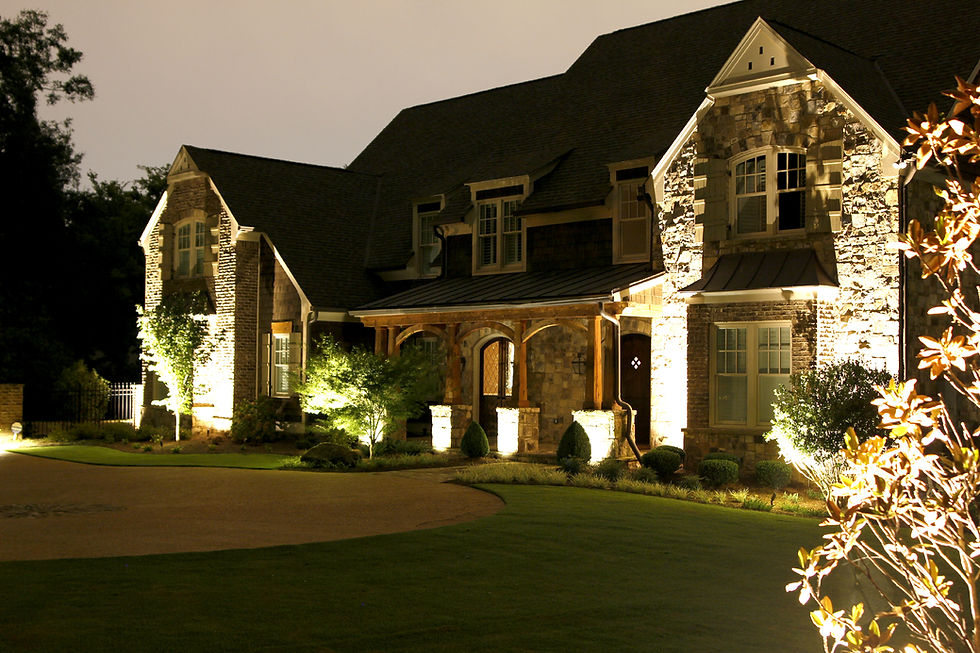Easy Steps for Dethatching Your Lawn
- Atlanta Pro Landscaping
- Mar 25, 2024
- 3 min read
You've been watering, mowing, fertilizing, weeding, and overseeding the right way, but your lawn isn't reflecting the work you're putting in. Don't give up: your lawn may benefit from dethatching.
What is a lawn thatch? What are the easy steps for dethatching a lawn? How do you know it's time to detach? The Atlanta landscaping experts provide answers to these and more below!

What is a lawn thatch?
Thatch is a layer of dead roots, stems, grass, shoots, and other organic matter that accumulates below the green vegetation of your lawn and above the soil surface. A thin layer of thatch (½ inch or less) is normal and even beneficial. However, when thatch builds up too fast and becomes excessive, it causes problems for your lawn.
Benefits of dethatching your lawn
A thick layer of thatch prevents moisture, air, and nutrients from reaching the soil and grass roots. When this occurs, your lawn suffers, and many problems arise. A thick layer of thatch also provides the perfect hiding spot for insects and fungi that cause diseases.
By dethatching your lawn, water penetration improves, and the grass gets more nutrients. There's also better air exchange and the conducive habitat for pests and diseases will be no more. Ultimately, your struggling lawn will transform into a beautiful, healthy turf.
How do you know when to dethatch your lawn?
Diseases, dry spots, pests, and thin blades may indicate your lawn needs dethatching. But here's how to know for sure:
Dig up a small section of the lawn with a trowel and measure the thatch. If it is more than a half-inch thick, you have a thatch problem.
The lawn feels spongy or bouncy when you walk on it.
When to dethatch your lawn
It's best to dethatch cool-season grasses in late summer or early fall. For warm-season grasses, the ideal time is late spring or early summer as they enter their peak growth period. It's important to avoid dethatching your lawn when it is stressed, dormant, or in extreme heat to prevent severe damage.
Tools for dethatching your lawn
Various tools are suitable for dethatching depending on the size of your lawn and the thickness of the thatch. For small lawns and light thatch, a garden rake or dethatching rake can be effective. A power dethatcher can is more suitable for larger areas and thicker thatch.
Steps for dethatching your lawn
Ensure your lawn is moist and not too wet. You can water two days before you plan to get to work.
Remove leaves, twigs, and other debris.
Mow your lawn to the ideal height if it exceeds 3 inches.
When dethatching, cover all areas evenly. If you are using a machine, run it over the lawn at least three times in different directions.
Rake up and remove the pile of thatch from your lawn.
What next after dethatching?
Your lawn may look worn out after removing the thatch. To support recovery, water the lawn deeply and apply fertilizer; your lawn will bounce back after some days. We recommend overseeding the lawn for dethatching done during the fall. This will encourage dense, even growth and prep the lawn for the coming seasons.
Let Atlanta's landscaping pros handle your dethatching job
You can DIY your dethatching job. But sometimes, leaving the task to the experts is best for you and your lawn. For thick patches of thatch or large lawns, consider hiring a pro.
They know when not to remove too much thatch at once, the tools ideal for your lawn, and whether your lawn is in the right condition for dethatching. If you are in the Atlanta Metro Area, request a FREE quote.




